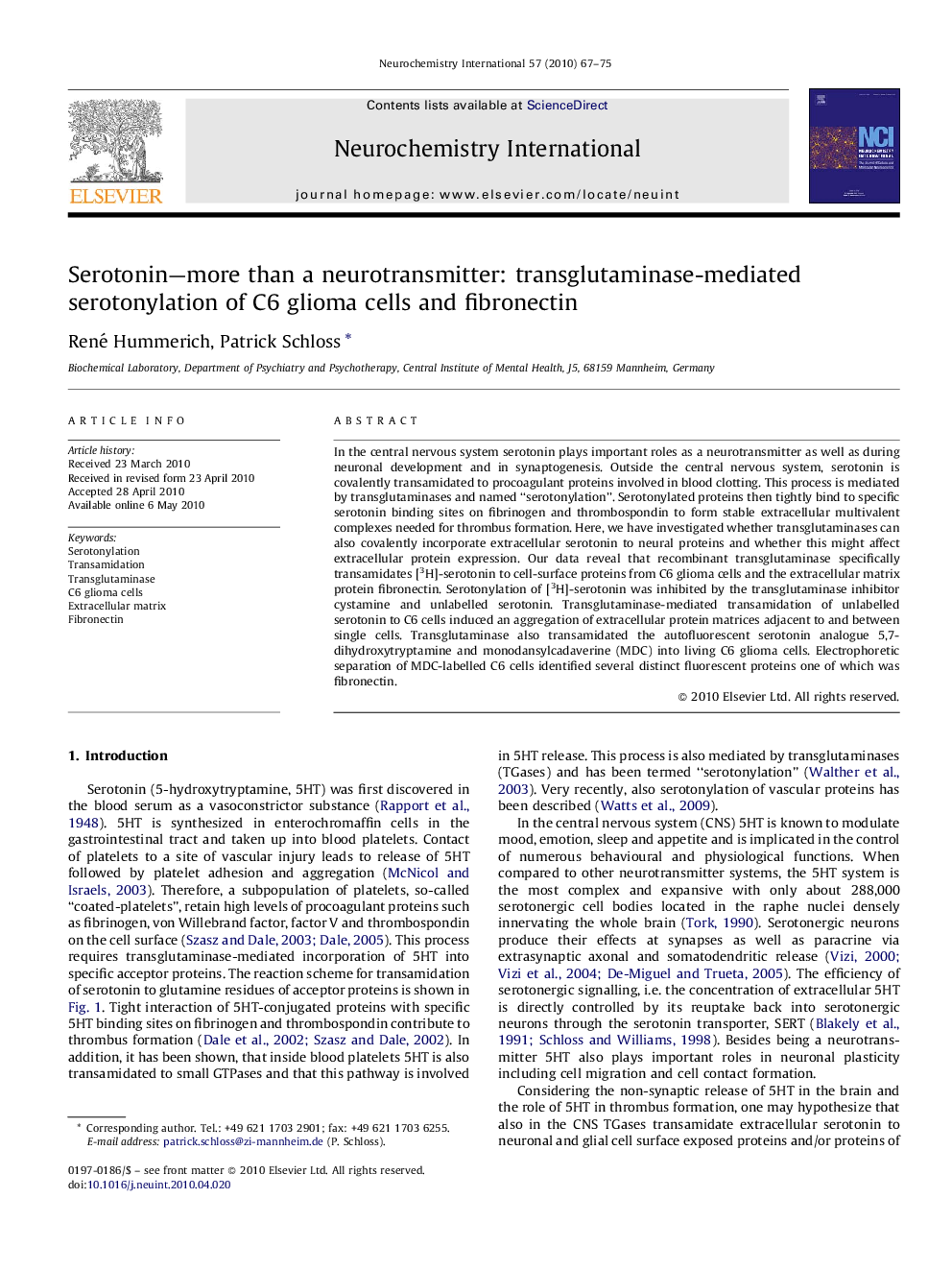| کد مقاله | کد نشریه | سال انتشار | مقاله انگلیسی | نسخه تمام متن |
|---|---|---|---|---|
| 2201376 | 1100015 | 2010 | 9 صفحه PDF | دانلود رایگان |

In the central nervous system serotonin plays important roles as a neurotransmitter as well as during neuronal development and in synaptogenesis. Outside the central nervous system, serotonin is covalently transamidated to procoagulant proteins involved in blood clotting. This process is mediated by transglutaminases and named “serotonylation”. Serotonylated proteins then tightly bind to specific serotonin binding sites on fibrinogen and thrombospondin to form stable extracellular multivalent complexes needed for thrombus formation. Here, we have investigated whether transglutaminases can also covalently incorporate extracellular serotonin to neural proteins and whether this might affect extracellular protein expression. Our data reveal that recombinant transglutaminase specifically transamidates [3H]-serotonin to cell-surface proteins from C6 glioma cells and the extracellular matrix protein fibronectin. Serotonylation of [3H]-serotonin was inhibited by the transglutaminase inhibitor cystamine and unlabelled serotonin. Transglutaminase-mediated transamidation of unlabelled serotonin to C6 cells induced an aggregation of extracellular protein matrices adjacent to and between single cells. Transglutaminase also transamidated the autofluorescent serotonin analogue 5,7-dihydroxytryptamine and monodansylcadaverine (MDC) into living C6 glioma cells. Electrophoretic separation of MDC-labelled C6 cells identified several distinct fluorescent proteins one of which was fibronectin.
Journal: Neurochemistry International - Volume 57, Issue 1, August 2010, Pages 67–75